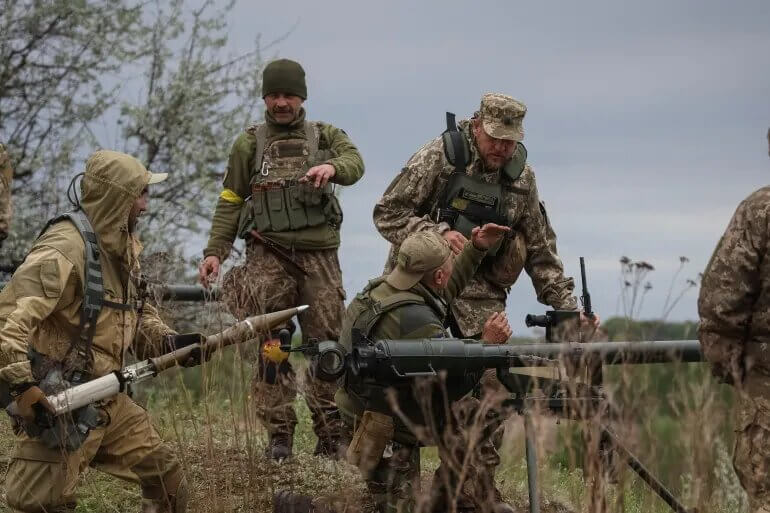US intelligence has assessed that Ukraine will not achieve its intended goals during its counteroffensive, The Washington Post (WP) reported, citing anonymous sources.
According to reports, a classified intelligence analysis indicates that Ukraine will likely not reach Melitopol and sever the land connection to Crimea. This conclusion is based on Russia’s ability to defend its borders.
US Intelligence Assessment
According to US officials, the Ukrainian troops, which are advancing towards Melitopol from Robotyne, more than 50 miles away, will remain several miles outside the city.
Melitopol is crucial to Ukraine’s counteroffensive as it serves as a starting point for Crimea. The city is at the crossroads of two major highways and a railway line, allowing Russia to deploy forces and equipment from the peninsula to other occupied territories in southern Ukraine.
Ukraine’s attempt to reclaim Russian-occupied territory will reportedly be halted before reaching the key southeastern city of Melitopol. Ukrainian troops are currently pushing south around Robotyne.
These predictions are “likely to prompt finger pointing inside Kyiv and Western capitals about why a counteroffensive that saw tens of billions of dollars in Western weapons and military equipment fell short of its goals,” the WP report noted.
Ukraine's counteroffensive is predicted to fall short of its objective to sever Russia's land bridge to Crimea, according to US intelligence officials. The counteroffensive, w #BREAKING_NEWS: https://t.co/97UNE8Zxmm
— World News Summary (@WorldNewsSummry) August 18, 2023
The path to Melitopol is extremely difficult, and even recapturing nearby cities like Tokmak would be challenging, stated Rob Lee, a Foreign Policy Research Institute military expert.
“Russia has three main defensive lines there, and then fortified cities after that,” Lee explained.
“It’s not just a question about whether Ukraine can breach one or two of them, but can they breach all three and have enough forces available after taking attrition to achieve something more significant like taking Tokmak or something beyond that.”
In the report, US officials dismiss claims that using F-16 fighter planes, or longer-range missile systems, such as ATACMS, would have resulted in a different outcome. “The problem remains piercing Russia’s main defensive line, and there’s no evidence these systems would’ve been a panacea,” said a senior administration official.
The Pentagon has reportedly repeatedly advised Ukraine to concentrate a large number of soldiers on a single point of entry. Even though Ukraine chose a different strategy, officials acknowledged it was Kyiv’s decision.
Officials in Washington suggested Kyiv might still face unexpected success and overcome the odds. According to a defence officer, Ukraine might defy historical norms and continue the counteroffensive into the winter, when keeping soldiers warm and equipped with food and ammunition becomes considerably more difficult.
The Ukrainian Armed Forces are pressing forward in their counter-offensive on multiple fronts, including Bakhmut, Melitopol, and Berdyansk.https://t.co/K5mcM7DKbj
— The New Voice of Ukraine (@NewVoiceUkraine) August 10, 2023
Ukraine’s Counteroffensive
Ukraine began its counteroffensive in early June, and Ukrainian forces pushed through Russia’s initial line of less defended positions and liberated three villages in the south of the Donetsk area. Four additional villages were liberated over the next two days. Ukraine later attacked a Russian munitions depot in southern Kherson.
The Ukrainian counteroffensive had made only minimal gains by the end of June. However, the Ukrainian defence minister warned this was just a “preview” of a more significant action.
Moscow accused Kyiv earlier this month of attacking the Crimea bridge, which connected the annexed peninsula to Russia. Ukraine claimed responsibility for the explosion, which partially caused the bridge to collapse, killing two people.
Subsequently, Ukrainian drone strikes damaged two skyscrapers in Moscow’s central business district by the end of July.

